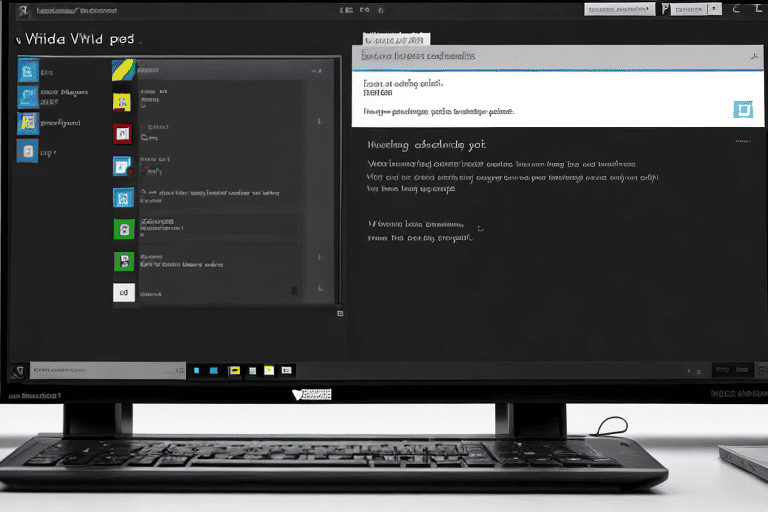
Click here to learn more about computers, computer repair, and technology
Why is my computer fan loud

Causes of a noisy computer fan
HTML
- HTML stands for HyperText Markup Language.
- It is the standard markup language used for creating web pages.
- HTML provides the structure and layout of a webpage.
- It allows for the inclusion of various media types such as images, videos, and audio.
Effective ways to reduce fan noise
Quiet fan options for a noise free experience
If you’re tired of the constant whirring and buzzing of your computer fan, it’s time to explore silent fan options for a noise-free experience. These innovative fans are designed to provide efficient cooling without the disruptive noise that can be a distraction in your workspace.
When searching for a silent fan, pay attention to it’s noise level, measured in decibels (dB).
Choose fans that have a noise level of 25 dB or lower for a truly peaceful operation.
Consider features such as rubber mounting pads or specially engineered fan blades to further minimize noise. Another important factor to consider is airflow, as a silent fan should also deliver adequate cooling.
Look for fans with a high CFM (cubic feet per minute) rating, indicating the amount of air the fan can move. This ensures efficient cooling without compromising on noise levels.
Two popular options for noise-free fans are [Business/Brand Name].
Troubleshooting noisy fan problems
Is your computer’s loud fan getting on your nerves? Dealing with the constant noise can be a real headache, not to mention the distraction it poses while you’re trying to work. But Here’s the thing, a noisy fan is more than just a nuisance – it might signal an underlying issue with your computer’s cooling system.
that’s where troubleshooting fan problems becomes crucial.
By identifying the root cause of the noise, you can ensure your computer remains in good working condition and prevent any potential damage.
So, Let’s dive into a few questions that can help you diagnose the problem.
Choosing the right fan for noise reduction
When it comes to choosing the right fan for noise reduction, there are a few key factors to consider. First and foremost, opt for a fan specifically designed for quiet operation.
These types of fans usually come with features such as larger blades or rubber mounting pads, which help decrease noise levels.
It is also important to choose a fan with a lower RPM (rotations per minute) as they tend to produce less noise.
Another factor to keep in mind is the size of the fan. Generally, larger fans are quieter as they can move the same amount of air at a lower RPM.
Make sure that the fan will fit properly in your desired location. Pay attention to the type of bearing used in the fan.
Fans with ball bearings are usually quieter and more long-lasting compared to those with sleeve bearings.
For even better noise reduction, consider fans with PWM (Pulse Width Modulation) technology.
Key Factors for Choosing a Fan for Noise Reduction
- Fans designed for quiet operation often have larger blades or rubber mounting pads, which help decrease noise levels.
- Fans with lower RPM tend to produce less noise.
- Larger fans are generally quieter as they can move the same amount of air at a lower RPM.
- Fans with ball bearings are usually quieter and more long-lasting compared to those with sleeve bearings.
Maintaining a quiet fan
One important aspect of maintaining a quiet fan is to regularly clean and maintain the computer fan filter. The filter acts as a barrier against dust and debris, preventing them from entering the fan and causing it to work harder and create more noise.
By keeping the filter clean and free from any obstructions, you can ensure that the fan operates quietly and efficiently.
Consider installing a fan grill or duct to improve the airflow and minimize noise.
These accessories can help direct the airflow in a more controlled manner and reduce noise. Another option is to use a fan adapter or connector, which allows you to connect multiple fans to a single power source, reducing the overall noise generated.
Lastly, there are software programs available that can help monitor and control the fan speed, allowing you to find the optimal balance between cooling and quiet operation.
Upgrading for quieter operation
When it comes to upgrading for a more peaceful operation, there are several options to consider for reducing the noise levels of your computer. One effective solution is to invest in a computer fan app or a fan speed controller.
These tools allow you to monitor and adjust the fan speed and settings, providing greater control over the noise generated.
You can explore using a fan hub, which allows you to connect multiple fans and manage their speed from a centralized location.
By utilizing these technologies, you can create a quieter computing environment while maintaining optimal cooling performance.
Options for Reducing Computer Noise Levels
- Investing in a computer fan app or a fan speed controller can effectively reduce noise levels.
- These tools provide the ability to monitor and adjust the fan speed and settings, giving users greater control over the generated noise.
- Using a fan hub allows for the connection of multiple fans and centralized management of their speed, contributing to a quieter computing environment.
- By utilizing these technologies, optimal cooling performance can be maintained while creating a more peaceful operating environment.
Importance of proper fan cleaning
Proper fan maintenance is essential for preserving computer performance and longevity while maximizing energy efficiency. As time passes, computer fans collect dust and debris, resulting in a range of issues like overheating, disruptive sounds, and reduced effectiveness.
Consistently cleaning your computer’s fan is vital for avoiding these concerns and promoting optimal airflow and cooling.
Eliminating dust and debris helps decrease energy consumption and lower electricity expenses.
A well-maintained fan fosters a healthier environment by minimizing the risk of respiratory problems and allergies caused by airborne dust particles.
Achieving a silent fan
Achieving a silent fan for your computer is crucial for a quiet and comfortable computing experience. If you find the constant high fan speeds bothersome, there are a few steps you can take to address this issue.
Firstly, consider implementing a fan controller or adjusting your computer’s cooling settings.
This will help maintain optimal temperature levels without the need for the fan to constantly operate at high speeds.
By carefully considering these factors, you can enjoy a quieter computing experience with a fan that operates silently.
Steps to Achieve a Silent Fan for Your Computer
- Implementing a fan controller can help regulate the fan speed and reduce noise levels.
- Adjusting your computer’s cooling settings can optimize temperature levels, preventing the need for the fan to constantly operate at high speeds.
- Using high-quality fans with advanced bearing technology can significantly reduce noise while maintaining efficient cooling.
- Cleaning the fan and its surrounding components regularly can prevent dust accumulation, which can cause the fan to work harder and produce more noise.
